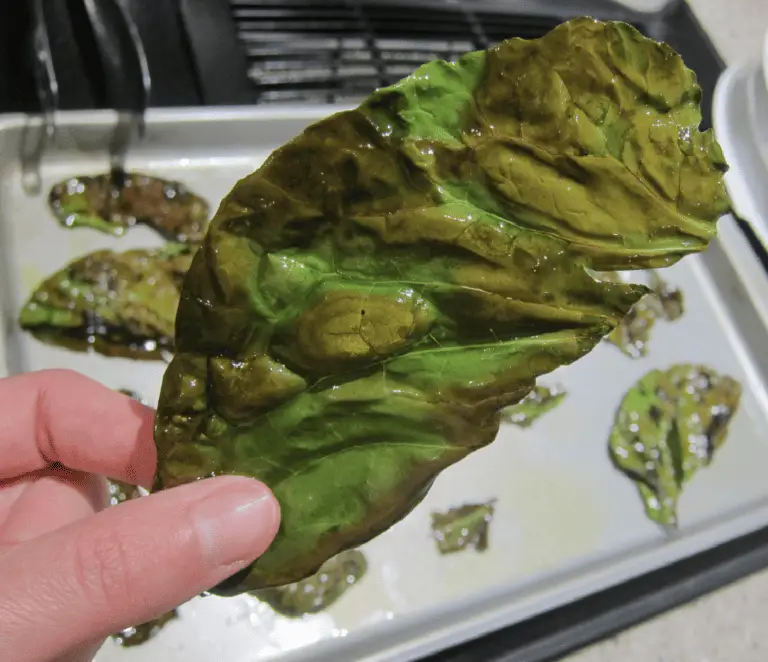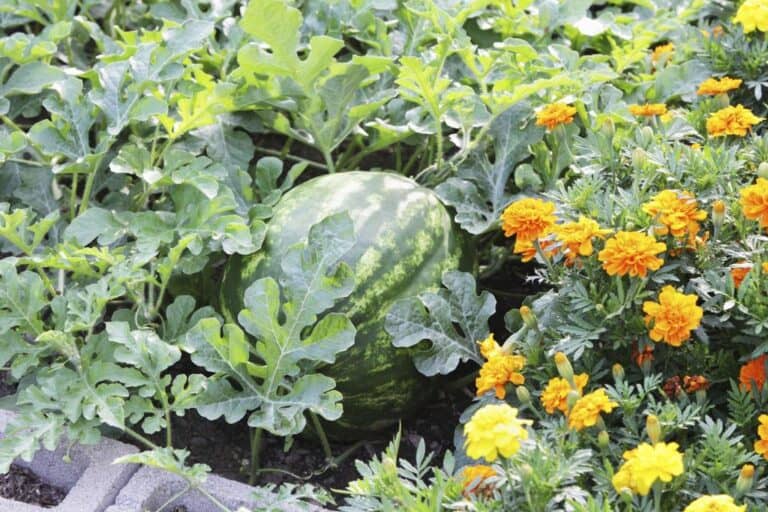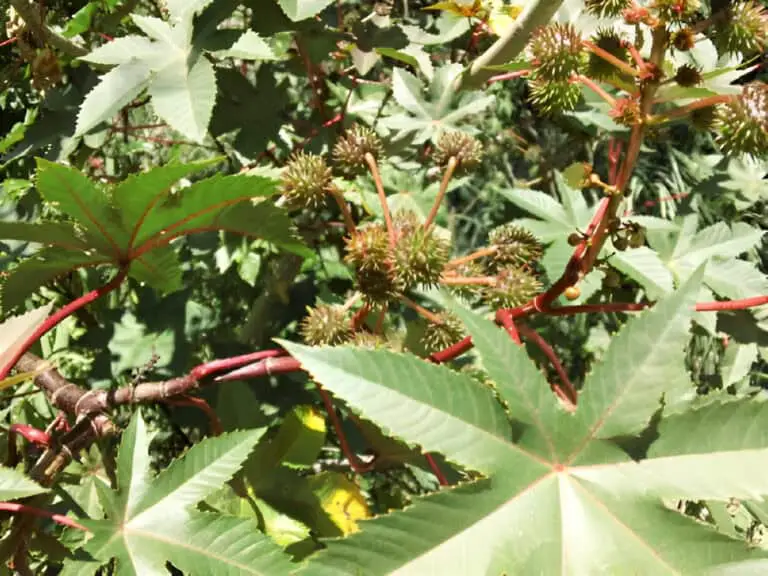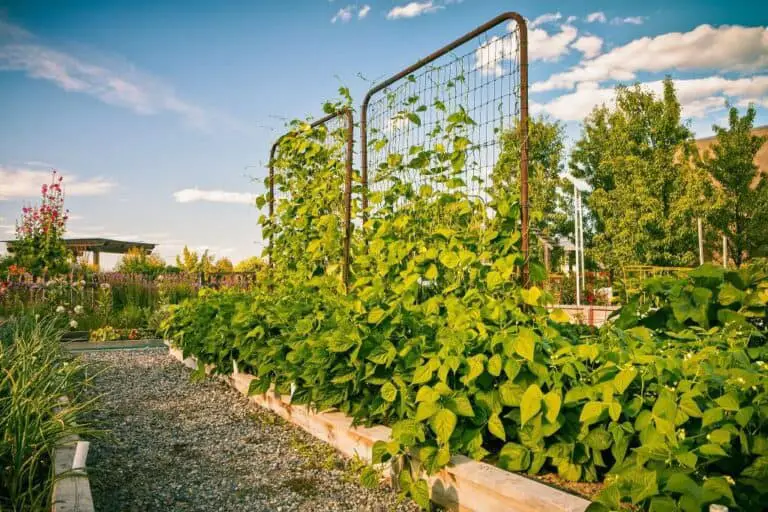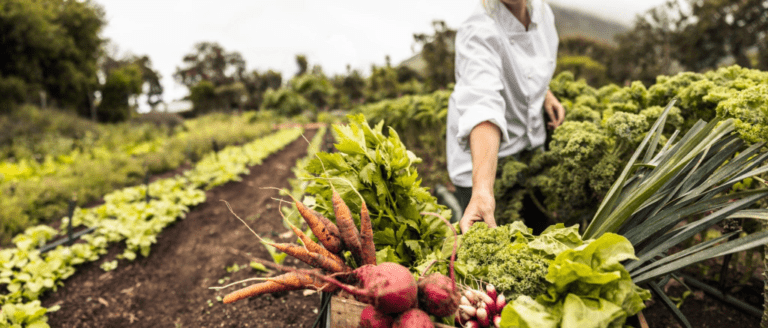Do Avocados Grow on Trees or Bushes? Decoding Avocado Growth
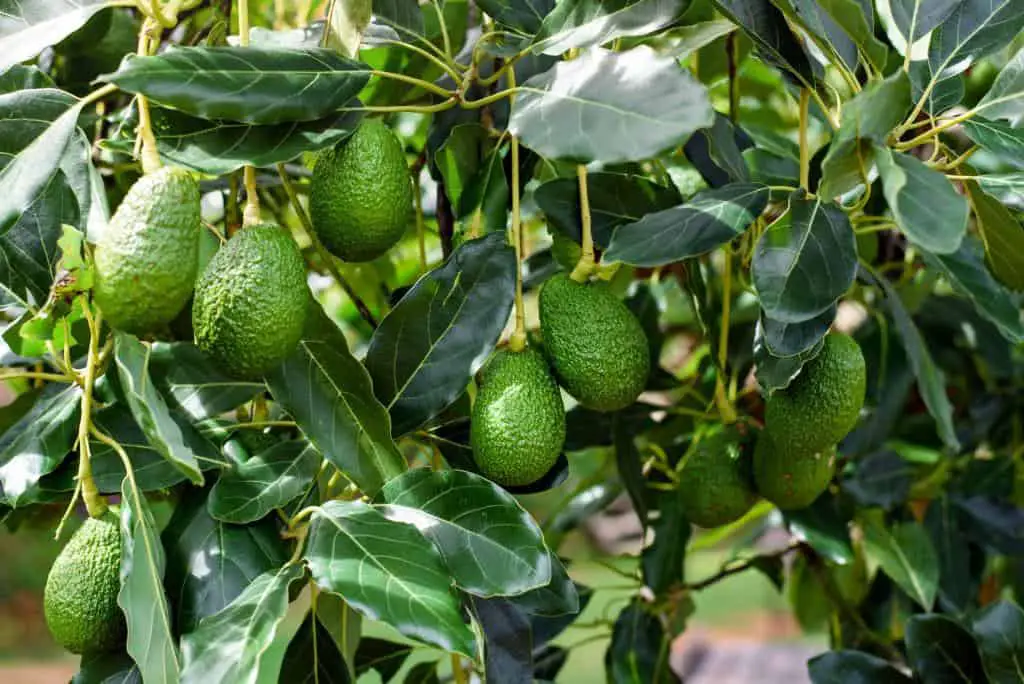
Welcome to the captivating world of avocados, where creamy goodness meets horticultural marvels. You’ve probably savored their delectable taste, but have you ever wondered how these beloved fruits come to be? Are avocados nurtured on towering trees, or do they flourish as compact bushes?
Today, we embark on an enlightening journey to decode the growth habits of avocados and uncover the secrets that lie within their flourishing existence.
Picture yourself wandering through an avocado orchard, where sunlight filters through the lush green canopy. Your curiosity piqued, you ponder the intricacies of avocado cultivation. As you stand amidst the grove, we’ll guide you through the captivating story of avocado growth, shedding light on the remarkable plants that produce these creamy delights.
With every bite of avocado toast or scoop of guacamole, you’ll appreciate the fascinating journey that each fruit takes. Prepare to unravel the mystery as we explore the contrasting paths of avocados—trees or bushes—and discover the wonders of their growth.
Overview of Avocado Trees
Avocado trees, scientifically known as Persea americana, are truly remarkable plants that have captured the hearts of many due to their delicious fruits and vibrant presence. Originating from Central and South America, these trees belong to the Lauraceae family, which also includes other beloved trees such as cinnamon and bay laurel.
The stature of avocado trees is awe-inspiring. Their tall and elegant presence, coupled with their lush green foliage, creates a picturesque canopy that adds beauty to any landscape.
What makes avocado trees even more fascinating is their perennial nature. These trees have the ability to live for many years, enduring through various seasons and weather conditions. They go through a fascinating life cycle, transitioning from flowering to fruiting and then to dormancy.
During the flowering stage, avocado trees boast exquisite flowers that contain both male and female reproductive organs. This unique characteristic, known as “protogynous dichogamy,” prevents self-pollination and ensures the tree’s genetic diversity.
In suitable growing conditions, avocado trees can be incredibly productive. They have the potential to produce an abundance of fruits, which makes them highly desirable additions to orchards and home gardens alike.
Do Avocados Grow on Trees or Bushes?
Avocado trees, with their graceful and towering presence, are the true bearers of this beloved fruit. Contrary to popular belief, avocados do not grow on bushes or shrubs but on magnificent trees.
These trees belong to the flowering plant family Lauraceae. With their sturdy trunks, sprawling branches, and dense foliage, avocado trees create an enchanting sight in orchards and landscapes.
The impressive stature of avocado trees sets them apart from the notion of being mere bushes. These trees can reach heights ranging from 30 to 65 feet, creating a canopy that provides shade and shelter.
Their lush green leaves contribute to their grandeur, swaying gently in the breeze. This elevated position allows the avocados to grow and thrive, basking in the sunlight that filters through the leaves.
It’s worth noting that avocado trees are not only known for their size and elegance but also for their longevity. These trees are perennial, meaning they can live for many years, sometimes even for several decades. With each passing year, they go through a cycle of growth, flowering, and fruit production.
This unique characteristic adds to their allure and makes them a valuable addition to any landscape, both in terms of aesthetics and the delicious rewards they offer.
Avocado Tree Anatomy
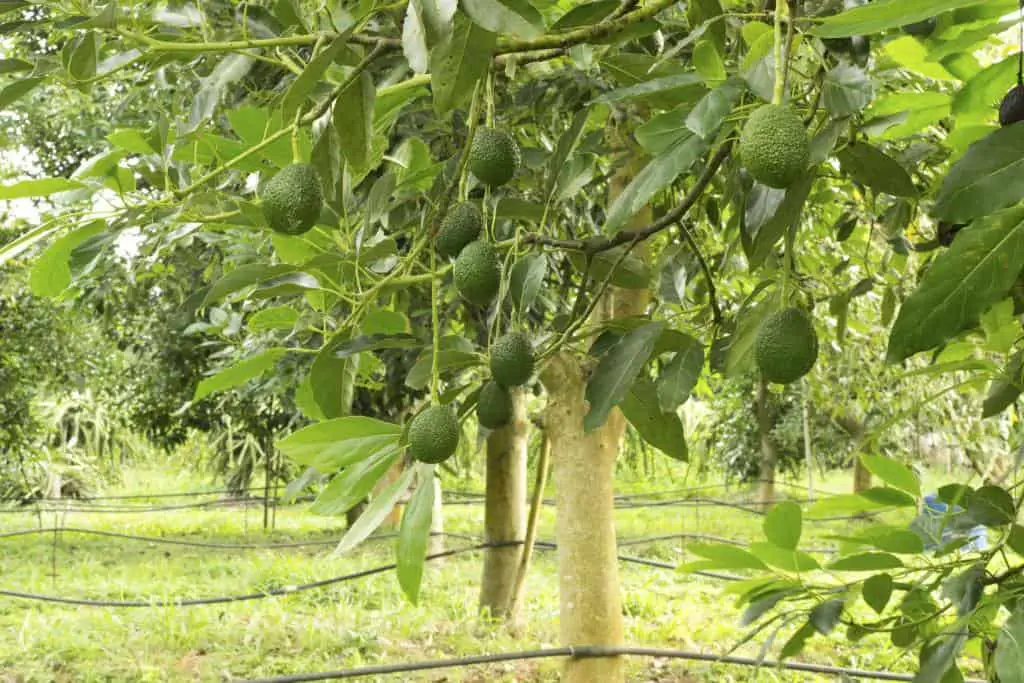
To understand the growth and development of avocado trees, let’s take a closer look at their anatomy. Avocado trees have a well-defined structure consisting of several key components.
1. Root System
An avocado tree’s root system is crucial for its overall health and stability. The roots absorb water and nutrients from the soil, providing sustenance for the entire tree. The roots also anchor the tree firmly in the ground, preventing it from toppling over during strong winds or storms.
2. Trunk, Branches, and Foliage
The trunk of an avocado tree serves as its main support structure. It grows tall and sturdy, branching out into numerous limbs. These branches then divide into smaller twigs, adorned with vibrant green leaves that provide shade for the tree’s delicate fruits.
3. Reproductive Organs and Fruit Development
When it comes to avocado trees, reproduction is a fascinating process. Avocado flowers contain both male and female reproductive organs. However, they possess a unique characteristic called “protogynous dichogamy.” This means that the female stigma becomes receptive before the male pollen is released, preventing self-pollination.
Pollination of avocado flowers primarily occurs through the help of bees and other pollinators. Once pollination is successful, the tree starts developing fruits. The avocado fruit grows from a small ovary at the base of the flower, gradually enlarging over time.
Avocado Tree Propagation
To propagate avocado trees, several methods are commonly employed. Let’s explore the different techniques used to propagate these magnificent trees.
1. Growing Avocado Trees from Seeds
Growing avocado trees from seeds is a popular and rewarding method. You can start by carefully removing the seed from a ripe avocado and planting it in a pot filled with well-draining soil. With patience and proper care, the seed will germinate and develop into a small avocado tree.
2. Techniques for Grafting Avocado Trees
Grafting is another common technique used to propagate avocado trees. It involves joining a desired avocado variety (scion) with a compatible rootstock. Grafting allows growers to maintain specific characteristics of a desired avocado cultivar while benefiting from the rootstock’s disease resistance or adaptability to different soil conditions.
Successful grafting requires precise techniques and expertise, making it a preferred method for commercial avocado production.
Avocado Tree Maintenance
To ensure the health and vitality of avocado trees, proper maintenance is essential. Let’s delve into the key aspects of avocado tree care.
1. Pruning and Shaping Avocado Trees
Regular pruning helps maintain the shape and structure of avocado trees while promoting optimal fruit production. Pruning should be done during the tree’s dormant period to avoid interfering with its growth cycle. It involves removing dead or diseased branches, thinning out dense foliage to improve air circulation, and shaping the tree for better light penetration.
2. Irrigation Requirements and Watering Techniques
Avocado trees have moderate water needs, and proper irrigation is crucial for their growth and fruit production. Young trees require frequent watering to establish a strong root system, while mature trees have more drought tolerance. Deep watering is recommended to encourage deep root growth and prevent water stress.
Monitoring soil moisture levels and adjusting irrigation accordingly is important. It’s best to provide water slowly and evenly, allowing it to penetrate the root zone without causing water logging or runoff.
3. Fertilization and Soil Management for Healthy Growth
Avocado trees have specific nutrient requirements to thrive. Applying a balanced fertilizer formulated for avocado trees helps provide the necessary nutrients for optimal growth, flowering, and fruit development. It’s important to follow the recommended dosage and timing guidelines to avoid over-fertilization, which can harm the tree.
Maintaining proper soil conditions is equally important. Avocado trees prefer well-draining soil with a slightly acidic to neutral pH. Regular soil testing can help identify any nutrient deficiencies or imbalances, allowing for targeted amendments to ensure the tree’s health.
4. Pest and Disease Control Measures for Avocado Trees
Avocado trees are susceptible to various pests and diseases that can negatively impact their growth and fruit quality. Common pests include avocado lace bugs, thrips, and mites. Regular inspection of the tree’s foliage, fruit, and trunk can help detect any signs of infestation. Integrated pest management techniques, including cultural practices, biological controls, and judicious use of insecticides, can help manage these pests effectively.
Diseases like root rot, anthracnose, and fungal infections can also affect avocado trees. Proper sanitation, ensuring good drainage, and avoiding over-irrigation can help prevent disease development. Fungicides and other disease management strategies may be necessary in severe cases.
Avocado Harvesting and Fruit Production
After patiently nurturing your avocado tree, the time eventually comes to reap the rewards of your efforts. Let’s explore the key aspects of avocado harvesting and post-harvest care.
1. Factors Influencing Avocado Fruit Production
Avocado fruit production depends on several factors. Firstly, avocado trees are highly sensitive to frost, so growing them in suitable climatic conditions is essential. Secondly, proper pollination plays a crucial role. Ensuring a healthy population of pollinators, providing diverse avocado varieties for cross-pollination, and maintaining a favorable flower-to-fruit ratio all contribute to higher fruit yields.
2. Timing and Stages of Avocado Harvesting
Determining the right time to harvest avocados can be challenging, as it varies depending on the avocado variety and growing region. Avocado fruits mature on the tree but do not ripen until after they are picked. Harvesting is typically done when the fruit reaches the desired size, color, and firmness. Testing the fruit’s readiness by gently applying pressure to the skin can indicate if it’s ready to be harvested.
3. Techniques for Harvesting Avocados
Avocado harvesting requires care and precision to avoid damaging the fruit. Using a long pole with a harvesting tool or handpicking are common methods. Care should be taken to handle the avocados gently to prevent bruising or causing physical damage.
4. Post-Harvest Handling and Storage of Avocados
Once harvested, avocados need to be handled properly to maintain their quality and extend their shelf life. They should be stored at room temperature (around 65-75°F) until they reach the desired ripeness. Placing them in a paper bag with a ripe banana or apple can speed up the ripening process. Once ripe, avocados can be stored in the refrigerator to slow down further ripening.
It’s important to handle avocados with care during post-harvest handling to prevent bruising or any physical damage. Inspecting the fruits regularly and using them in a timely manner can help avoid wastage.
By understanding the intricacies of avocado growth, from tree anatomy to propagation, maintenance, and harvesting, you can cultivate healthy avocado trees and enjoy the fruits of your labor.
Conclusion
Avocado trees are remarkable plants that provide us with delectable and nutritious fruits. Whether you’re a passionate gardener or considering adding avocado trees to your orchard, understanding their growth process is key to success. From the overview of avocado trees to their anatomy, propagation methods, maintenance, and fruitful harvest, each aspect plays a vital role in the tree’s development. By applying the knowledge gained from this article, you can embark on your avocado-growing journey with confidence and enjoy the rewards of homegrown avocados.
FAQs
Can I grow an avocado tree from a store-bought avocado?
Yes, you can grow an avocado tree from a store-bought avocado. Simply remove the seed, plant it in a pot with well-draining soil, and provide proper care for germination.
How do I know when an avocado is ripe and ready to eat?
Gently press the avocado with your fingers; if it yields to gentle pressure and feels slightly soft, it is ripe and ready to eat.
Can I plant an avocado tree in a container or pot?
Yes, avocado trees can be grown in containers or pots. Choose a suitable dwarf or semi-dwarf variety and ensure proper drainage to avoid waterlogging.
How much space does an avocado tree need to grow?
Avocado trees require ample space to grow and spread their branches. They should be planted at least 20 to 30 feet apart to allow for proper growth and development.
Do avocado trees require cross-pollination to produce fruit?
Some avocado varieties are self-pollinating, while others benefit from cross-pollination. To ensure a higher fruit yield, planting multiple avocado varieties is recommended.
Are there any specific avocado tree diseases that I should be aware of?
Avocado trees are susceptible to diseases such as root rot, anthracnose, and fungal infections. Regular monitoring, proper sanitation, and appropriate disease management strategies are essential to prevent and control these diseases.
How long does it take for an avocado tree to bear fruit?
Avocado trees generally take between 3 to 4 years to start bearing fruit, although this can vary depending on the variety and growing conditions.

